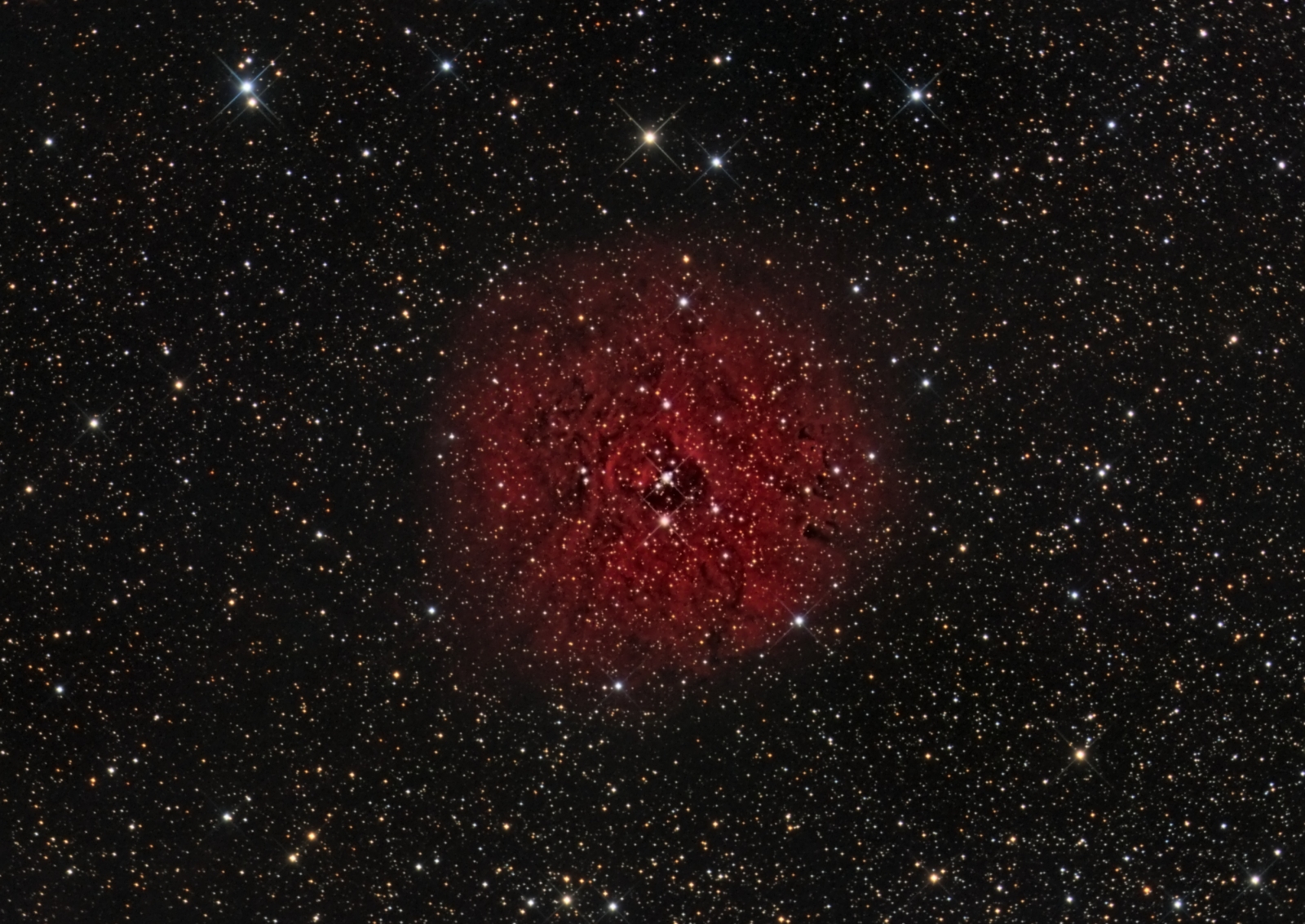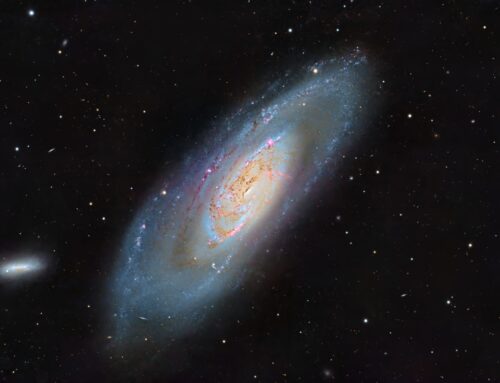Sh2-170 Emission Nebula
Click image for full size version
November 23, 2014
I am continuing to explore the Sharpless catalogue of faint nebulae. This rarely imaged object is Sh2-170, an emission nebula in Cassiopeia. It lies in the Perseus arm of our galaxy around 7500 light years distant. At its centre is a small, young star cluster, Stock 18. The bright star at the centre of the nebula is ionizing the surrounding hydrogen gas and causing the nebula to glow. To give a sense of scale, the nebula is about 2/3 the diameter of the full moon.
In processing this image, I used a new (to me) technique: using the individual colour channels to create a synthetic luminance channel. This approach improved detail in the nebula, smoothed the background and revealed more, tighter stars.
Tekkies:
10″ ASA @ f/6.8 on a Paramount MX. SBIG STL-11000 with Baader RGB and Ha filters. Guiding with 80 mm f/6 Stellar-Vue refractor and camera’s Remote Guide Head. Acquisition with TheSkyX. Focusing with FocusMax4. Scripting using CCDCommander. All pre-processing and processing in PixInsight. No moon. Good transparency and poor seeingfor R, G, B and Ha. Acquired from my SkyShed in Guelph, ON.
14x5m R, 12x5m G, 11x5mB; 10x20m Ha (total = 6hr25m)
The batch pre-processing script was used to calibrate, register and combine the frames. R, G, B, and Ha channels were cropped and DynamicBackgroundExtraction applied.
A synthetic Luminance channel was created from the RGB and Ha channels using image integration with averaging and noise-weighting of the channels. The synthetic Luminance was processed with histogram transformation, HDR Multiscale Transform (6 and 4 pixel scales), TGV Denoise, another HistogramTransformation, LocalHistogramEqualization on the nebula only ,and another pass of TGVDenoise on the nebula only.
R, G and B were combined and the NB-RGB Combine script was used to combine the Ha and RGB data (Ha scale of 1.2). The resulting HaRGB file was processed with colour calibration, HistogramTransformation, HDR Multiscale Transform (6 and 4 pixel scales), TGV Denoise, another HistogramTransformation, LocalHistogramEqualization on the nebula only, and DarkStructureEnhance script on the nebula only. Then the saturation of the nebula was increased slightly. Small scale structures were extracted and used as a mask to permit contrast increase just in the centre of the stars (avoiding coloured halos), followed by and a final curve to boost contrast and saturation.
The luminance of the HaRGB image was extracted and matched to the synthetic L image using LinearFit, and then combined back into the HaRGB image using ChannelCombine in the Lab colour space. Then LRGBCombine was used to overlay the L onto the HaRGB and make the HaLRGB image.
The HaLRGB image was tweaked for contrast, brightness and saturation. Morphological transformation was used to reduce star sizes slightly so as to not distract from the nebula. This step was recommended by award winning astrophotographer Terry Hancock. Thanks, Terry, for the feedback.
The Image scale is 1.1 arcsec/pixel for this camera/telescope combination.







Excellent